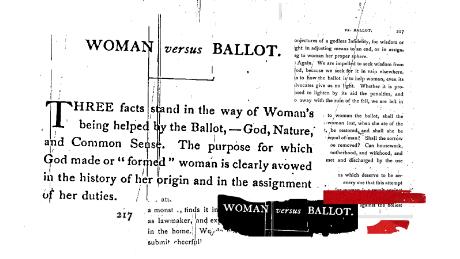Even during the worst hostilities, both countries worked together to tackle an enemy that has resurfaced again — locusts
This morning the trees are almost denuded and the locusts, hanging on the twigs and branches, appear to have changed the colour of the foliage, for the tops of the trees seem covered with a yellow blight, which on close inspection turns out to be locusts…”
That description, from a Times of India report from 1902, describing the devastation of mango orchards in Trombay, near Bombay, is a reminder of how terrifyingly transformative a locust attack can be. It is now being experienced in districts of Punjab in both Pakistan and India, an ancient plague that seems, mystifyingly, to have come to life again.
Locust swarms were once so common that TOI carried very detailed reports about them. In 1879, a correspondent noted the cruel way in which they followed other disasters: “In the famine districts these winged armies made a clean sweep of all the vegetation for miles around, while the moral effect of their presence upon a famine-struck population was so great that the population completely lost heart and ceased to try and battle…”
So sudden and punishing are the attacks that is not surprising that they have commonly been given a divine interpretation, like the swarms that formed one of the plagues of Egypt in the Bible.
STEEDS OF SHIVA
In 1929 , TOI noted that in some districts locusts were called the horses of Mahadev (Shiva) and “were actually caught alive, treated with utmost respect, offered the best of food, worshipped with due reverence.” The belief was that “if the wrath of the god has been appeased and his depredatory appetite satisfied, then the avenging army received marching orders…”
The British might have sneered at these beliefs, but their more vigorous responses to locusts didnt seem to do much good either. In 1899, TOI reported the police superintendent of Panch Mahals, Mr R P Lambert, firing blank guns to scare away swarms.
A suggestion from 1929 to use aircraft to control locusts was abandoned because it seemed more likely to kill the pilots as their engines clogged with the insects. One correspondent admitted that the main satisfaction of another solution, tar-coated screens, was watching the insects struggle and die, but it made little difference to the huge numbers.
LOCUST ROAST WITH GHEE
Perhaps the only solution was the natural one noted by the writer in 1879: feast on them like the birds and animals do. It was suggested that even humans could do the same: “Pull off the legs and wings and roast with a little ghee in an iron dish, adding curry powder, pepper and salt to taste… locusts are said to be in flavour not unlike shrimp,” Eating locusts is, in fact, a common survival strategy in places ravaged by them, simply because there is little else left. The Hebrew scriptures specify that, unlike other insects, the locust is kosher to eat.
Entomologists had always been mystified by the way locusts suddenly seemed to swarm out of nowhere, and it was Russian entomologist Sir Boris Uvarov who made an important connection in 1921. Locusts and grasshoppers were the same species, but under stressed conditions of drought and diminishing food, grasshoppers laid eggs that became locusts. These locusts could swarm and fly far off in search of food and, when this was found in abundance again, future generations could revert to being solitary grasshoppers.
This insight transformed locust control because now field workers could look for conditions in which grasshoppers were getting stressed and transforming into locusts — and if these were controlled, the larger swarms might never form.
InsightRead More – Source
Even during the worst hostilities, both countries worked together to tackle an enemy that has resurfaced again — locusts
This morning the trees are almost denuded and the locusts, hanging on the twigs and branches, appear to have changed the colour of the foliage, for the tops of the trees seem covered with a yellow blight, which on close inspection turns out to be locusts…”
That description, from a Times of India report from 1902, describing the devastation of mango orchards in Trombay, near Bombay, is a reminder of how terrifyingly transformative a locust attack can be. It is now being experienced in districts of Punjab in both Pakistan and India, an ancient plague that seems, mystifyingly, to have come to life again.
Locust swarms were once so common that TOI carried very detailed reports about them. In 1879, a correspondent noted the cruel way in which they followed other disasters: “In the famine districts these winged armies made a clean sweep of all the vegetation for miles around, while the moral effect of their presence upon a famine-struck population was so great that the population completely lost heart and ceased to try and battle…”
So sudden and punishing are the attacks that is not surprising that they have commonly been given a divine interpretation, like the swarms that formed one of the plagues of Egypt in the Bible.
STEEDS OF SHIVA
In 1929 , TOI noted that in some districts locusts were called the horses of Mahadev (Shiva) and “were actually caught alive, treated with utmost respect, offered the best of food, worshipped with due reverence.” The belief was that “if the wrath of the god has been appeased and his depredatory appetite satisfied, then the avenging army received marching orders…”
The British might have sneered at these beliefs, but their more vigorous responses to locusts didnt seem to do much good either. In 1899, TOI reported the police superintendent of Panch Mahals, Mr R P Lambert, firing blank guns to scare away swarms.
A suggestion from 1929 to use aircraft to control locusts was abandoned because it seemed more likely to kill the pilots as their engines clogged with the insects. One correspondent admitted that the main satisfaction of another solution, tar-coated screens, was watching the insects struggle and die, but it made little difference to the huge numbers.
LOCUST ROAST WITH GHEE
Perhaps the only solution was the natural one noted by the writer in 1879: feast on them like the birds and animals do. It was suggested that even humans could do the same: “Pull off the legs and wings and roast with a little ghee in an iron dish, adding curry powder, pepper and salt to taste… locusts are said to be in flavour not unlike shrimp,” Eating locusts is, in fact, a common survival strategy in places ravaged by them, simply because there is little else left. The Hebrew scriptures specify that, unlike other insects, the locust is kosher to eat.
Entomologists had always been mystified by the way locusts suddenly seemed to swarm out of nowhere, and it was Russian entomologist Sir Boris Uvarov who made an important connection in 1921. Locusts and grasshoppers were the same species, but under stressed conditions of drought and diminishing food, grasshoppers laid eggs that became locusts. These locusts could swarm and fly far off in search of food and, when this was found in abundance again, future generations could revert to being solitary grasshoppers.
This insight transformed locust control because now field workers could look for conditions in which grasshoppers were getting stressed and transforming into locusts — and if these were controlled, the larger swarms might never form.
InsightRead More – Source











